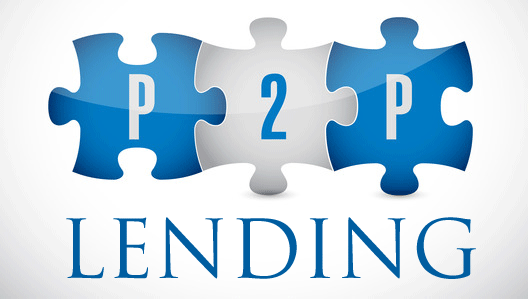What is Peer to Peer Lending?

Peer-to-peer lending, abbreviated P2P Lending, is the practice of lending money to unrelated individuals, or "peers", without going through a traditional financial intermediary such as a bank or other traditional financial institution. This lending takes place online on a peer-to-peer lending companies' websites using various different technologies and credit checking tools. Potential borrowers and lenders are brought together on the website, in much the same way that Amazon or Ebay brings together buyers and sellers of general merchandise. What is unique about P2P lending is that the borrowers and lenders are both likely to be individuals, instead of a traditional business to consumer loan. Many also use the abbreviation "P2P" when discussing peer-to-peer lending or investing industries, more generally, Peer-to-peer lending is also known as crowdlending.
Highlights of P2P Lending
Peer-to-peer lending does not fit cleanly into any of the three conventional types of financial institutions—deposit takers, investors or insurers and is sometimes classified as an alternative financial service.
The key highlights of peer-to-peer lending are:
-it is conducted for profit;
-no necessary common alliance or prior relationship between lenders and borrowers;
-intermediation by a peer-to-peer lending company;
-transactions take place online;
-lenders may choose which borrowers to invest in;
-the loans are unsecured and are not protected by government insurance;
-loans are securities that can be sold to other lenders.
Early peer-to-peer lending was also characterized by disintermediation and reliance on social networks but these features have started to disappear. While it is still true that the emergence of internet and e-commerce makes it possible to do away with traditional financial intermediaries and that people may be less likely to default to the members of their own social communities, the emergence of new intermediaries has proven to be time and cost saving. Extending crowdsourcing to unfamiliar lenders and borrowers opens up new opportunities.
Most peer-to-peer intermediaries provide the following services:
-online investment platform to enable borrowers to attract lenders and investors to identify and purchase loans that meet their investment criteria
-development of credit models for loan approvals and pricing
-verifying borrower identity, bank account, employment and income
-performing borrower credit checks and filtering out the unqualified
-processing payments from borrowers and forwarding those payments to the lenders who invested in the loan
-servicing loans, providing customer service to borrowers and attempting to collect payments from borrowers who are delinquent or in default
-legal compliance and reporting
-finding new lenders and borrowers (marketing)